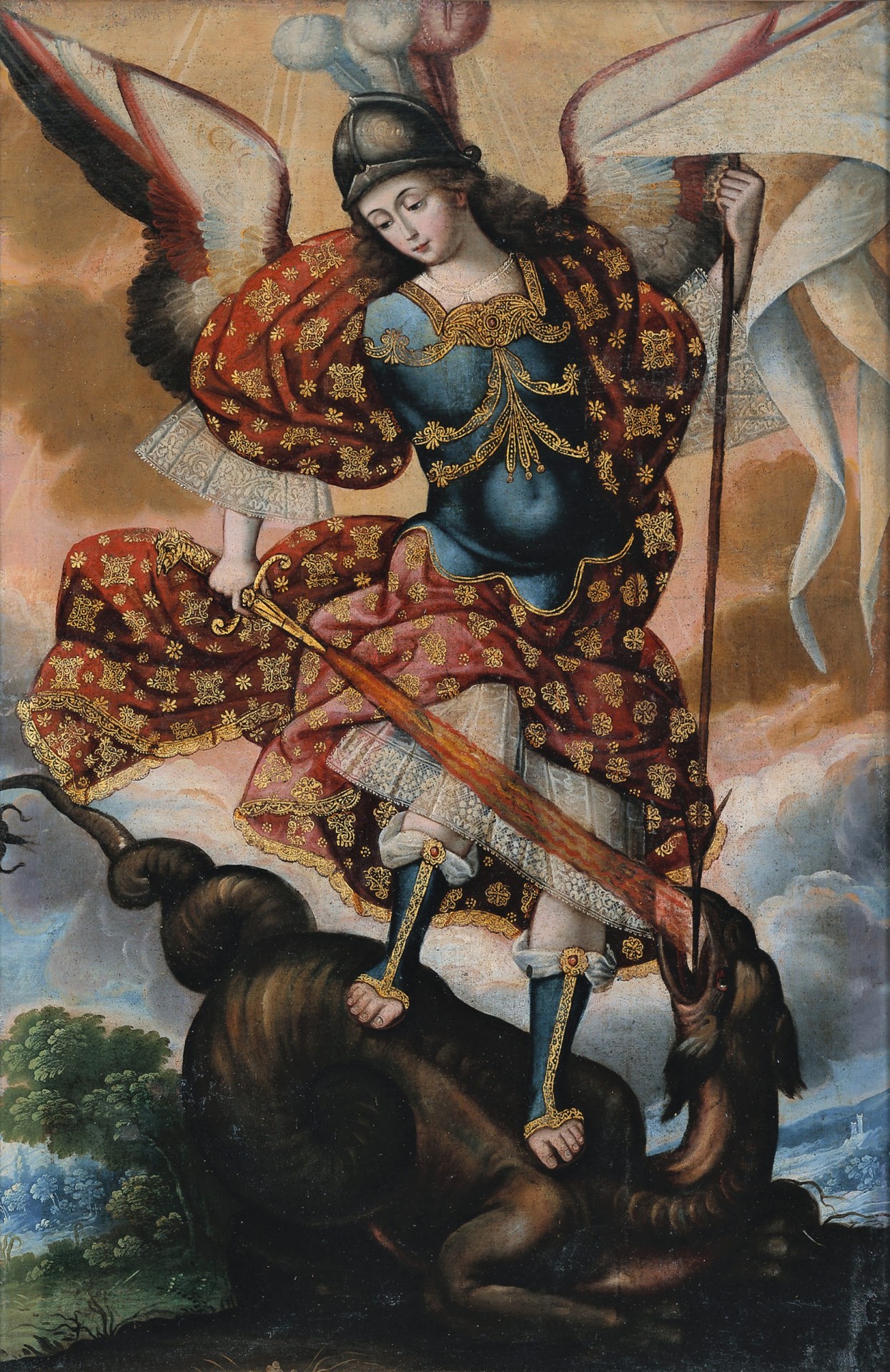PAST EXHIBITION
The Virgin, Saints, and Angels South American Paintings 1600-1825 from the Thoma Collection
OPENS
January 29, 2008
CLOSES
March 16, 2008
SHARE
About the Exhibit
January 29, 2008 – March 16, 2008
This January Blanton Museum of Art is pleased to present The Virgin, Saints, and Angels: South American Paintings 1600–1825 from the Thoma Collection. Organized by the Cantor Arts Center at Stanford University, the exhibition features 55 miraculous paintings from South America during the days of Spanish Colonialism in the Viceroyalty of Peru, which encompassed present–day Peru, Paraguay, Uruguay, Bolivia, Ecuador, Colombia, parts of Chile and Argentina, and Panama.
Drawn from the renowned private collection of Marilynn and Carl Thoma, this internationally touring exhibition shows how local artisans, centuries ago, transformed the religious and painting traditions of Spanish missionaries to create an artistry all their own. Gorgeously colored, richly detailed paintings of the Virgin Mary, saints, and angels, replete with mystical symbolism, illustrate how the images of the Old World were transformed by the imagination of the New World.
The first major North American exhibition to focus exclusively on paintings from this period of South American colonial history, The Virgin, Saints, and Angels offers a rare opportunity to study the distinctive artistic traditions that evolved as European beliefs and imagery were adapted by the indigenous peoples of the Andes region. The missionaries who followed on the heels of the conquistadors taught local artisans how to integrate European art forms and Christian iconography to produce images of God, the Trinity, the Virgin Mary, and saints and angels, which were used in the campaign to win Catholic converts. The native artists also learned the European portrait tradition and created images of the distant kings of Spain who ruled from afar through their viceroys and other nobles.
Initially, oil paintings in South America were provided by artists from Italy, Spain, and Flanders. As local artists became proficient in their techniques, they began decorating churches and public buildings. Innumerable easel paintings were also produced, often in large workshops with various artists contributing specialized skills to the finished artwork. Visitors to the exhibition will find several paintings still in their original, richly carved frames, which are part of this workshop tradition.
Created for the Church, the government, and private individuals, these easel paintings found homes throughout Spain’s territories in the New World. Over time, many were also exported abroad. Although the Cuzco School is the best known, other regional styles evolved in centers elsewhere in Peru, Bolivia, Columbia, and Ecuador. Including examples by Italian, Flemish, Spanish, Creole, mestizo, and Indian hands, the Thoma collection offers a compelling survey of the diverse regional schools and illustrates the range of religious and secular subject matter favored in the region.
The exhibition is divided into several sections: early European–influenced images; proselytizing images and images teaching Christian dogma; images of particular devotions such as the Virgin of Copacabana, Our Lady of Pomato, and Our Lady of Cayma; narrative works celebrating the Life of the Virgin Mary; and portraits.
Prior to the Blanton presentation, the exhibition made its debut at the Cantor Arts Center (September 21 – December 31, 2006), then traveled to the Tucson Museum of Art (January 20 – April 29, 2007) and the Museo de Arte de Puerto Rico (May 24 – August 5, 2007). It is currently on view at the University of Toronto Art Center (September 4 – December 9, 2007). The presentation at the Blanton is the last venue in which the exhibition will be featured.
Curated by Dr. Suzanne Stratton–Pruitt, curator of the Thoma collection, the exhibition is accompanied by a 250–page fully illustrated catalogue co–published by Stanford and Skira. It includes essays offering new perspectives on the art of Spanish South America by such international scholars as Stratton–Pruitt, Kenneth Mills (University of Toronto), Thomas DaCosta Kaufmann (Princeton), Thomas Cummins (Harvard), Hiroshige Okada (University of Fukui, Japan), and Ramón Mujica Pinilla (University of San Marcos, Lima).
The Virgin, Saints, and Angels: South American Paintings 1600 – 1825 from the Thoma Collection was organized by the Iris & B. Gerald Cantor Center for Visual Arts at Stanford University, and has been made possible by generous support from the Clumeck Fund and from funds established by the late Drs. A. Jess and Ben Shenson.

Saint Michael Archangel, Late 17th – Early 18th century
Oil on canvas
Collection of Marilynn and Carl Thoma

The Child Mary Spinning, 18th century
Oil on canvas
Collection of Marilynn and Carl Thoma

